12/28/12
Filed under:
General
Posted by:
site admin @ 7:21 pm

291212 SATURDAY LESSON 795
from FREE ONLINE eNālāndā Research and
Practice UNIVERSITY through http://sarvajan.ambedkar.org




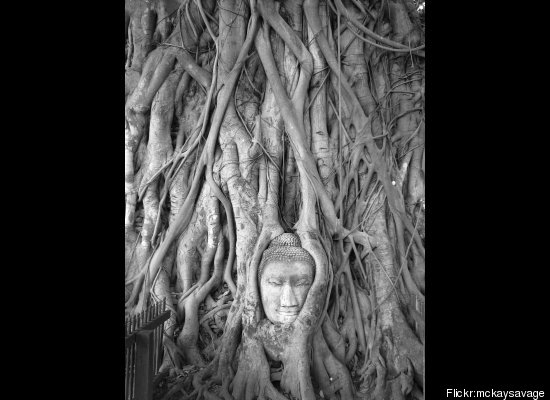

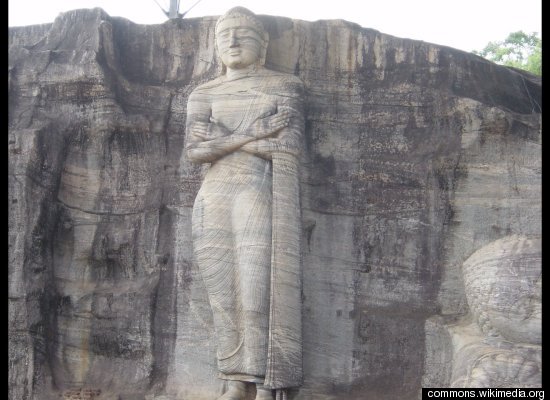
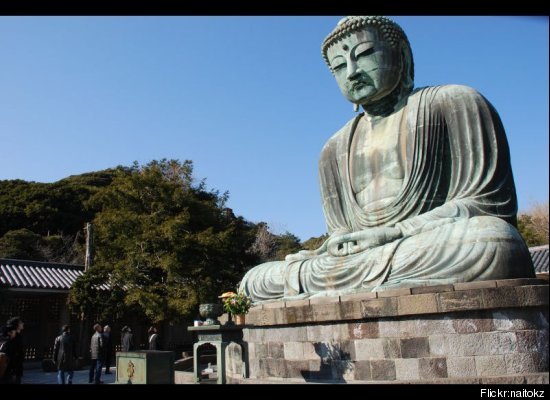



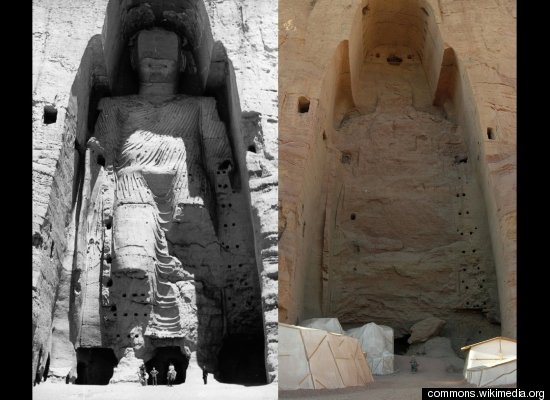
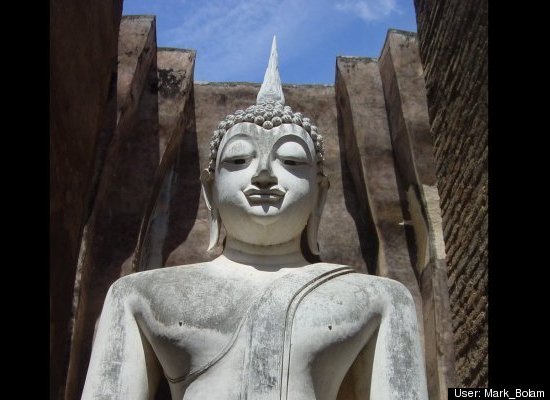


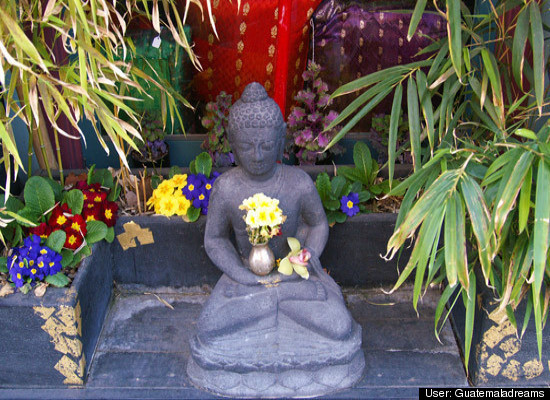


E2. சமுதயசத்தியத்தை(தோற்ற ஸத்தியத்தை) விளக்கிக்காட்டுதல்
மற்றும் எது, பிக்குளே,
dukkha-samudaya ariyasacca துக்கத்தின் மூலக்காரணமான மேதக்க மெய்ம்மை ?
அது இந்த, மறுபிறப்பிற்கு வழிகாட்டும் அடக்க முடியாத ஆசை/இச்சை/தாகம்/தகாச்
சிற்றின்பவேட்கை, அத்துடன் இணைக்கப்பட்ட ஆர்வ வேட்கை மற்றும் இன்பம்
நுகர்தல், இங்கும் அங்குமாக களிப்பூட்டு காண்டல், அதை வாக்காட: kāma-taṇhā,
bhava-taṇhā and vibhava-taṇhā புலனுணர்வுக்கு ஆட்பட்ட சபல இச்சை, மறுமுறை
தொடர்ந்து உயிர் வாழ அடக்க முடியாத ஆசை மற்றும் மறுமுறை தொடர்ந்து உயிர்
வாழாதிருக்க அடக்க முடியாத ஆசை. ஆனால் இந்த taṇhā அடக்க முடியாத
ஆசை/இச்சை/தாகம்/தகாச் சிற்றின்பவேட்கை, பிக்குளே, எழும்பும் நேரத்தில்,
அது எங்கே யெழும்புகிறது, தானே நிலைகொள்கிற நேரத்தில், அது எங்கே
நிலைகொள்கிறது? அங்கே இந்த உலகத்தினுள்ளே எவை மகிழ்வளிக்கிற மற்றும்
ஒத்துக்கொள்கிறதாகக் காணப்படுகிற , அங்கே தான் taṇhā அடக்க முடியாத
ஆசை/இச்சை/தாகம்/தகாச் சிற்றின்பவேட்கை, எழும்பும் நேரத்தில், அது எங்கே
யெழும்புகிறது, தானே நிலைகொள்கிற நேரத்தில், அது எங்கே நிலைகொள்கிறது.
மற்றும் எது இந்த உலகத்தினுள்ளே
எவை மகிழ்வளிக்கிற மற்றும் ஒத்துக்கொள்கிறதாகக் காணப்படுகிறது? இந்த கண்கள்
உலகத்தினுள்ளே மகிழ்வளிக்கிற மற்றும் ஒத்துக்கொள்கிறதாகக் காணப்படுகிறது,
அங்கே தான் taṇhā அடக்க முடியாத ஆசை/இச்சை/தாகம்/தகாச் சிற்றின்பவேட்கை ,
எழும்பும் நேரத்தில், அது எங்கே யெழும்புகிறது, தானே நிலைகொள்கிற
நேரத்தில், அது எங்கே நிலைகொள்கிறது,இந்த காது உலகத்தினுள்ளே
மகிழ்வளிக்கிற மற்றும் ஒத்துக்கொள்கிறதாகக் காணப்படுகிறது, அங்கே தான்
taṇhā அடக்க முடியாத ஆசை/இச்சை/தாகம்/தகாச் சிற்றின்பவேட்கை, எழும்பும்
நேரத்தில், அது எங்கே யெழும்புகிறது, தானே நிலைகொள்கிற நேரத்தில், அது
எங்கே நிலைகொள்கிறது. இந்த மூக்கு உலகத்தினுள்ளே மகிழ்வளிக்கிற மற்றும்
ஒத்துக்கொள்கிறதாகக் காணப்படுகிறது, அங்கே தான் taṇhā அடக்க முடியாத
ஆசை/இச்சை/தாகம்/தகாச் சிற்றின்பவேட்கை, எழும்பும் நேரத்தில், அது எங்கே
யெழும்புகிறது, தானே நிலைகொள்கிற நேரத்தில், அது எங்கே நிலைகொள்கிறது.
இந்த நாக்கு உலகத்தினுள்ளே மகிழ்வளிக்கிற மற்றும் ஒத்துக்கொள்கிறதாகக்
காணப்படுகிறது, அங்கே தான் taṇhā அடக்க முடியாத ஆசை/இச்சை/தாகம்/தகாச்
சிற்றின்பவேட்கை, எழும்பும் நேரத்தில், அது எங்கே யெழும்புகிறது, தானே
நிலைகொள்கிற நேரத்தில், அது எங்கே நிலைகொள்கிறது. இந்த Kāya காயம் உடல்
உலகத்தினுள்ளே மகிழ்வளிக்கிற மற்றும் ஒத்துக்கொள்கிறதாகக் காணப்படுகிறது,
அங்கே தான் taṇhā அடக்க முடியாத ஆசை/இச்சை/தாகம்/தகாச் சிற்றின்பவேட்கை,
எழும்பும் நேரத்தில், அது எங்கே யெழும்புகிறது, தானே நிலைகொள்கிற
நேரத்தில், அது எங்கே நிலைகொள்கிறது. இந்த Mana மனம் உலகத்தினுள்ளே
மகிழ்வளிக்கிற மற்றும் ஒத்துக்கொள்கிறதாகக் காணப்படுகிறது, அங்கே தான்
taṇhā அடக்க முடியாத ஆசை/இச்சை/தாகம்/தகாச் சிற்றின்பவேட்கை, எழும்பும்
நேரத்தில், அது எங்கே யெழும்புகிறது, தானே நிலைகொள்கிற நேரத்தில், அது
எங்கே நிலைகொள்கிறது.
கண்ணுக்கு
தெரிகிற படிவங்கள் இந்த உலகத்தினுள்ளே எவை மகிழ்வளிக்கிற மற்றும்
ஒத்துக்கொள்கிறதாகக் காணப்படுகிறதோ, அங்கே தான் taṇhā அடக்க முடியாத
ஆசை/இச்சை/தாகம்/தகாச் சிற்றின்பவேட்கை, எழும்பும் நேரத்தில், அது எங்கே
யெழும்புகிறது, தானே நிலைகொள்கிற நேரத்தில், அது எங்கே நிலைகொள்கிறது.
ஒலிகள், இந்த உலகத்தினுள்ளே எவை மகிழ்வளிக்கிற மற்றும் ஒத்துக்கொள்கிறதாகக்
காணப்படுகிறதோ, அங்கே தான் taṇhā அடக்க முடியாத ஆசை/இச்சை/தாகம்/தகாச்
சிற்றின்பவேட்கை, எழும்பும் நேரத்தில், அது எங்கே யெழும்புகிறது, தானே
நிலைகொள்கிற நேரத்தில், அது எங்கே நிலைகொள்கிறது. வாசனைகள், இந்த
உலகத்தினுள்ளே எவை மகிழ்வளிக்கிற மற்றும் ஒத்துக்கொள்கிறதாகக்
காணப்படுகிறதோ, அங்கே தான் taṇhā அடக்க முடியாத ஆசை/இச்சை/தாகம்/தகாச்
சிற்றின்பவேட்கை, எழும்பும் நேரத்தில், அது எங்கே யெழும்புகிறது, தானே
நிலைகொள்கிற நேரத்தில், அது எங்கே நிலைகொள்கிறது. சுவைகள் இந்த
உலகத்தினுள்ளே எவை மகிழ்வளிக்கிற மற்றும் ஒத்துக்கொள்கிறதாகக்
காணப்படுகிறதோ, அங்கே தான் taṇhā அடக்க முடியாத ஆசை/இச்சை/தாகம்/தகாச்
சிற்றின்பவேட்கை, எழும்பும் நேரத்தில், அது எங்கே யெழும்புகிறது, தானே
நிலைகொள்கிற நேரத்தில், அது எங்கே நிலைகொள்கிறது.உடலியல்பான
புலனுணர்வாதம் இந்த உலகத்தினுள்ளே எவை மகிழ்வளிக்கிற மற்றும்
ஒத்துக்கொள்கிறதாகக் காணப்படுகிறதோ, அங்கே தான் taṇhā அடக்க முடியாத
ஆசை/இச்சை/தாகம்/தகாச் சிற்றின்பவேட்கை, எழும்பும் நேரத்தில், அது எங்கே
யெழும்புகிறது, தானே நிலைகொள்கிற நேரத்தில், அது எங்கே நிலைகொள்கிறது.
Dhammas
தம்மங்கள் யாவுங் கடந்த மெய்யாகக் காண்டல் கட்டம் இந்த உலகத்தினுள்ளே எவை
மகிழ்வளிக்கிற மற்றும் ஒத்துக்கொள்கிறதாகக் காணப்படுகிறதோ, அங்கே தான்
taṇhā அடக்க முடியாத ஆசை/இச்சை/தாகம்/தகாச் சிற்றின்பவேட்கை, எழும்பும்
நேரத்தில், அது எங்கே யெழும்புகிறது, தானே நிலைகொள்கிற நேரத்தில், அது
எங்கே நிலைகொள்கிறது.
இந்த eye-viññāṇa கண்-விழிப்புணர்வுநிலை இந்த உலகத்தினுள்ளே எவை
மகிழ்வளிக்கிற மற்றும் ஒத்துக்கொள்கிறதாகக் காணப்படுகிறதோ, அங்கே தான்
taṇhā அடக்க முடியாத ஆசை/இச்சை/தாகம்/தகாச் சிற்றின்பவேட்கை, எழும்பும்
நேரத்தில், அது எங்கே யெழும்புகிறது, தானே நிலைகொள்கிற நேரத்தில், அது
எங்கே நிலைகொள்கிறது.இந்த ear-viññāṇa காது-விழிப்புணர்வுநிலை இந்த
உலகத்தினுள்ளே எவை மகிழ்வளிக்கிற மற்றும் ஒத்துக்கொள்கிறதாகக்
காணப்படுகிறதோ, அங்கே தான் taṇhā அடக்க முடியாத ஆசை/இச்சை/தாகம்/தகாச்
சிற்றின்பவேட்கை, எழும்பும் நேரத்தில், அது எங்கே யெழும்புகிறது, தானே
நிலைகொள்கிற நேரத்தில், அது எங்கே நிலைகொள்கிறது.இந்த nose-viññāṇa
மூக்கு-விழிப்புணர்வுநிலை இந்த உலகத்தினுள்ளே எவை மகிழ்வளிக்கிற மற்றும்
ஒத்துக்கொள்கிறதாகக் காணப்படுகிறதோ, அங்கே தான் taṇhā அடக்க முடியாத
ஆசை/இச்சை/தாகம்/தகாச் சிற்றின்பவேட்கை, எழும்பும் நேரத்தில், அது எங்கே
யெழும்புகிறது, தானே நிலைகொள்கிற நேரத்தில், அது எங்கே நிலைகொள்கிறது.
இந்த tongue-viññāṇa நாக்கு-விழிப்புணர்வுநிலை இந்த உலகத்தினுள்ளே எவை
மகிழ்வளிக்கிற மற்றும் ஒத்துக்கொள்கிறதாகக் காணப்படுகிறதோ, அங்கே தான்
taṇhā அடக்க முடியாத ஆசை/இச்சை/தாகம்/தகாச் சிற்றின்பவேட்கை, எழும்பும்
நேரத்தில், அது எங்கே யெழும்புகிறது, தானே நிலைகொள்கிற நேரத்தில், அது
எங்கே நிலைகொள்கிறது. இந்த Kāyaகாயம் -viññāṇa உடம்பு-விழிப்புணர்வுநிலை
இந்த உலகத்தினுள்ளே எவை மகிழ்வளிக்கிற மற்றும் ஒத்துக்கொள்கிறதாகக்
காணப்படுகிறதோ, அங்கே தான் taṇhā அடக்க முடியாத ஆசை/இச்சை/தாகம்/தகாச்
சிற்றின்பவேட்கை, எழும்பும் நேரத்தில், அது எங்கே யெழும்புகிறது, தானே
நிலைகொள்கிற நேரத்தில், அது எங்கே நிலைகொள்கிறது.
இந்த Mana-viññāṇa
மனம்-விழிப்புணர்வுநிலை இந்த உலகத்தினுள்ளே எவை மகிழ்வளிக்கிற மற்றும்
ஒத்துக்கொள்கிறதாகக் காணப்படுகிறதோ, அங்கே தான் taṇhā அடக்க முடியாத
ஆசை/இச்சை/தாகம்/தகாச் சிற்றின்பவேட்கை, எழும்பும் நேரத்தில், அது எங்கே
யெழும்புகிறது, தானே நிலைகொள்கிற நேரத்தில், அது எங்கே நிலைகொள்கிறது.
இந்த eye-samphassa கண்-தொடர்பு இந்த உலகத்தினுள்ளே எவை மகிழ்வளிக்கிற
மற்றும் ஒத்துக்கொள்கிறதாகக் காணப்படுகிறதோ, அங்கே தான் taṇhā அடக்க
முடியாத ஆசை/இச்சை/தாகம்/தகாச் சிற்றின்பவேட்கை, எழும்பும் நேரத்தில்,
அது எங்கே யெழும்புகிறது, தானே நிலைகொள்கிற நேரத்தில், அது எங்கே
நிலைகொள்கிறது.இந்த ear-samphassa காது-தொடர்பு இந்த உலகத்தினுள்ளே எவை
மகிழ்வளிக்கிற மற்றும் ஒத்துக்கொள்கிறதாகக் காணப்படுகிறதோ, அங்கே தான்
taṇhā அடக்க முடியாத ஆசை/இச்சை/தாகம்/தகாச் சிற்றின்பவேட்கை, எழும்பும்
நேரத்தில், அது எங்கே யெழும்புகிறது, தானே நிலைகொள்கிற நேரத்தில், அது
எங்கே நிலைகொள்கிறது.இந்த nose-samphassa மூக்கு-தொடர்பு இந்த
உலகத்தினுள்ளே எவை மகிழ்வளிக்கிற மற்றும் ஒத்துக்கொள்கிறதாகக்
காணப்படுகிறதோ, அங்கே தான் taṇhā அடக்க முடியாத ஆசை/இச்சை/தாகம்/தகாச்
சிற்றின்பவேட்கை, எழும்பும் நேரத்தில், அது எங்கே யெழும்புகிறது, தானே
நிலைகொள்கிற நேரத்தில், அது எங்கே நிலைகொள்கிறது. இந்த tongue-samphassa
நாக்கு-தொடர்பு இந்த உலகத்தினுள்ளே எவை மகிழ்வளிக்கிற மற்றும்
ஒத்துக்கொள்கிறதாகக் காணப்படுகிறதோ, அங்கே தான் taṇhā அடக்க முடியாத
ஆசை/இச்சை/தாகம்/தகாச் சிற்றின்பவேட்கை, எழும்பும் நேரத்தில், அது எங்கே
யெழும்புகிறது, தானே நிலைகொள்கிற நேரத்தில், அது எங்கே நிலைகொள்கிறது.
இந்த Kāyaகாயம் -samphassa உடம்பு-தொடர்பு இந்த உலகத்தினுள்ளே எவை
மகிழ்வளிக்கிற மற்றும் ஒத்துக்கொள்கிறதாகக் காணப்படுகிறதோ, அங்கே தான்
taṇhā அடக்க முடியாத ஆசை/இச்சை/தாகம்/தகாச் சிற்றின்பவேட்கை, எழும்பும்
நேரத்தில், அது எங்கே யெழும்புகிறது, தானே நிலைகொள்கிற நேரத்தில், அது
எங்கே நிலைகொள்கிறது. இந்த Mana-samphassa மனம்-தொடர்பு இந்த
உலகத்தினுள்ளே எவை மகிழ்வளிக்கிற மற்றும் ஒத்துக்கொள்கிறதாகக்
காணப்படுகிறதோ, அங்கே தான் taṇhā அடக்க முடியாத ஆசை/இச்சை/தாகம்/தகாச்
சிற்றின்பவேட்கை, எழும்பும் நேரத்தில், அது எங்கே யெழும்புகிறது, தானே
நிலைகொள்கிற நேரத்தில், அது எங்கே நிலைகொள்கிறது.
The vedanāவேதனையால் பிறந்த இந்த eye-samphassa கண்-தொடர்பு இந்த
உலகத்தினுள்ளே எவை மகிழ்வளிக்கிற மற்றும் ஒத்துக்கொள்கிறதாகக்
காணப்படுகிறதோ, அங்கே தான் taṇhā அடக்க முடியாத ஆசை/இச்சை/தாகம்/தகாச்
சிற்றின்பவேட்கை, எழும்பும் நேரத்தில், அது எங்கே யெழும்புகிறது, தானே
நிலைகொள்கிற நேரத்தில், அது எங்கே நிலைகொள்கிறது.இந்த ear-samphassa
காது-தொடர்பு இந்த உலகத்தினுள்ளே எவை மகிழ்வளிக்கிற மற்றும்
ஒத்துக்கொள்கிறதாகக் காணப்படுகிறதோ, அங்கே தான் taṇhā அடக்க முடியாத
ஆசை/இச்சை/தாகம்/தகாச் சிற்றின்பவேட்கை, எழும்பும் நேரத்தில், அது எங்கே
யெழும்புகிறது, தானே நிலைகொள்கிற நேரத்தில், அது எங்கே நிலைகொள்கிறது.இந்த
nose-samphassa மூக்கு-தொடர்பு இந்த உலகத்தினுள்ளே எவை மகிழ்வளிக்கிற
மற்றும் ஒத்துக்கொள்கிறதாகக் காணப்படுகிறதோ, அங்கே தான் taṇhā அடக்க
முடியாத ஆசை/இச்சை/தாகம்/தகாச் சிற்றின்பவேட்கை, எழும்பும் நேரத்தில்,
அது எங்கே யெழும்புகிறது, தானே நிலைகொள்கிற நேரத்தில், அது எங்கே
நிலைகொள்கிறது. இந்த tongue-samphassa நாக்கு-தொடர்பு இந்த
உலகத்தினுள்ளே எவை மகிழ்வளிக்கிற மற்றும் ஒத்துக்கொள்கிறதாகக்
காணப்படுகிறதோ, அங்கே தான் taṇhā அடக்க முடியாத ஆசை/இச்சை/தாகம்/தகாச்
சிற்றின்பவேட்கை, எழும்பும் நேரத்தில், அது எங்கே யெழும்புகிறது, தானே
நிலைகொள்கிற நேரத்தில், அது எங்கே நிலைகொள்கிறது.
இந்த Kāyaகாயம்
-samphassa உடம்பு-தொடர்பு இந்த உலகத்தினுள்ளே எவை மகிழ்வளிக்கிற மற்றும்
ஒத்துக்கொள்கிறதாகக் காணப்படுகிறதோ, அங்கே தான் taṇhā அடக்க முடியாத
ஆசை/இச்சை/தாகம்/தகாச் சிற்றின்பவேட்கை, எழும்பும் நேரத்தில், அது எங்கே
யெழும்புகிறது, தானே நிலைகொள்கிற நேரத்தில், அது எங்கே
நிலைகொள்கிறது.
இந்த Mana-samphassa மனம்-தொடர்பு இந்த உலகத்தினுள்ளே எவை
மகிழ்வளிக்கிற மற்றும் ஒத்துக்கொள்கிறதாகக் காணப்படுகிறதோ, அங்கே தான்
taṇhā அடக்க முடியாத ஆசை/இச்சை/தாகம்/தகாச் சிற்றின்பவேட்கை, எழும்பும்
நேரத்தில், அது எங்கே யெழும்புகிறது, தானே நிலைகொள்கிற நேரத்தில், அது
எங்கே நிலைகொள்கிறது.
இந்த saññā புலனுணர்வு கண்ணுக்கு தெரிகிற படிவங்கள் இந்த உலகத்தினுள்ளே எவை
மகிழ்வளிக்கிற மற்றும் ஒத்துக்கொள்கிறதாகக் காணப்படுகிறதோ, அங்கே தான்
taṇhā அடக்க முடியாத ஆசை/இச்சை/தாகம்/தகாச் சிற்றின்பவேட்கை, எழும்பும்
நேரத்தில், அது எங்கே யெழும்புகிறது, தானே நிலைகொள்கிற நேரத்தில், அது
எங்கே நிலைகொள்கிறது. saññā புலனுணர்வு ஒலிகள், இந்த உலகத்தினுள்ளே எவை
மகிழ்வளிக்கிற மற்றும் ஒத்துக்கொள்கிறதாகக் காணப்படுகிறதோ, அங்கே தான்
taṇhā அடக்க முடியாத ஆசை/இச்சை/தாகம்/தகாச் சிற்றின்பவேட்கை, எழும்பும்
நேரத்தில், அது எங்கே யெழும்புகிறது, தானே நிலைகொள்கிற நேரத்தில், அது
எங்கே நிலைகொள்கிறது. saññā புலனுணர்வு வாசனைகள், இந்த உலகத்தினுள்ளே எவை
மகிழ்வளிக்கிற மற்றும் ஒத்துக்கொள்கிறதாகக் காணப்படுகிறதோ, அங்கே தான்
taṇhā அடக்க முடியாத ஆசை/இச்சை/தாகம்/தகாச் சிற்றின்பவேட்கை, எழும்பும்
நேரத்தில், அது எங்கே யெழும்புகிறது, தானே நிலைகொள்கிற நேரத்தில், அது
எங்கே நிலைகொள்கிறது. saññā புலனுணர்வு சுவைகள் இந்த உலகத்தினுள்ளே எவை
மகிழ்வளிக்கிற மற்றும் ஒத்துக்கொள்கிறதாகக் காணப்படுகிறதோ, அங்கே தான்
taṇhā அடக்க முடியாத ஆசை/இச்சை/தாகம்/தகாச் சிற்றின்பவேட்கை, எழும்பும்
நேரத்தில், அது எங்கே யெழும்புகிறது, தானே நிலைகொள்கிற நேரத்தில், அது
எங்கே நிலைகொள்கிறது.
saññā புலனுணர்வு உடலியல்பான புலனுணர்வாதம் இந்த உலகத்தினுள்ளே எவை
மகிழ்வளிக்கிற மற்றும் ஒத்துக்கொள்கிறதாகக் காணப்படுகிறதோ, அங்கே தான்
taṇhā அடக்க முடியாத ஆசை/இச்சை/தாகம்/தகாச் சிற்றின்பவேட்கை, எழும்பும்
நேரத்தில், அது எங்கே யெழும்புகிறது, தானே நிலைகொள்கிற நேரத்தில், அது
எங்கே நிலைகொள்கிறது.
saññā புலனுணர்வு Dhammas தம்மங்கள் யாவுங் கடந்த மெய்யாகக் காண்டல் கட்டம்
இந்த உலகத்தினுள்ளே எவை மகிழ்வளிக்கிற மற்றும் ஒத்துக்கொள்கிறதாகக்
காணப்படுகிறதோ, அங்கே தான் taṇhā அடக்க முடியாத ஆசை/இச்சை/தாகம்/தகாச்
சிற்றின்பவேட்கை, எழும்பும் நேரத்தில், அது எங்கே யெழும்புகிறது, தானே
நிலைகொள்கிற நேரத்தில், அது எங்கே நிலைகொள்கிறது.
இந்த புலனுணர்வு தொகுத்த பொதுக் கருத்துப்படிவம் தொடர்புடைய கண்ணுக்கு
தெரிகிற படிவங்கள் இந்த உலகத்தினுள்ளே எவை மகிழ்வளிக்கிற மற்றும்
ஒத்துக்கொள்கிறதாகக் காணப்படுகிறதோ, அங்கே தான் taṇhā அடக்க முடியாத
ஆசை/இச்சை/தாகம்/தகாச் சிற்றின்பவேட்கை, எழும்பும் நேரத்தில், அது எங்கே
யெழும்புகிறது, தானே நிலைகொள்கிற நேரத்தில், அது எங்கே நிலைகொள்கிறது.
ஒலிகள், இந்த உலகத்தினுள்ளே எவை மகிழ்வளிக்கிற மற்றும் ஒத்துக்கொள்கிறதாகக்
காணப்படுகிறதோ, அங்கே தான் taṇhā அடக்க முடியாத ஆசை/இச்சை/தாகம்/தகாச்
சிற்றின்பவேட்கை, எழும்பும் நேரத்தில், அது எங்கே யெழும்புகிறது, தானே
நிலைகொள்கிற நேரத்தில், அது எங்கே நிலைகொள்கிறது. வாசனைகள், இந்த
உலகத்தினுள்ளே எவை மகிழ்வளிக்கிற மற்றும் ஒத்துக்கொள்கிறதாகக்
காணப்படுகிறதோ, அங்கே தான் taṇhā அடக்க முடியாத ஆசை/இச்சை/தாகம்/தகாச்
சிற்றின்பவேட்கை, எழும்பும் நேரத்தில், அது எங்கே யெழும்புகிறது, தானே
நிலைகொள்கிற நேரத்தில், அது எங்கே நிலைகொள்கிறது. சுவைகள் இந்த
உலகத்தினுள்ளே எவை மகிழ்வளிக்கிற மற்றும் ஒத்துக்கொள்கிறதாகக்
காணப்படுகிறதோ, அங்கே தான் taṇhā அடக்க முடியாத ஆசை/இச்சை/தாகம்/தகாச்
சிற்றின்பவேட்கை, எழும்பும் நேரத்தில், அது எங்கே யெழும்புகிறது, தானே
நிலைகொள்கிற நேரத்தில், அது எங்கே நிலைகொள்கிறது. உடலியல்பான
புலனுணர்வாதம் இந்த உலகத்தினுள்ளே எவை மகிழ்வளிக்கிற மற்றும்
ஒத்துக்கொள்கிறதாகக் காணப்படுகிறதோ, அங்கே தான் taṇhā அடக்க முடியாத
ஆசை/இச்சை/தாகம்/தகாச் சிற்றின்பவேட்கை, எழும்பும் நேரத்தில், அது எங்கே
யெழும்புகிறது, தானே நிலைகொள்கிற நேரத்தில், அது எங்கே நிலைகொள்கிறது. Dhammas
தம்மங்கள் யாவுங் கடந்த மெய்யாகக் காண்டல் கட்டம் இந்த உலகத்தினுள்ளே எவை
மகிழ்வளிக்கிற மற்றும் ஒத்துக்கொள்கிறதாகக் காணப்படுகிறதோ, அங்கே தான்
taṇhā அடக்க முடியாத ஆசை/இச்சை/தாகம்/தகாச் சிற்றின்பவேட்கை, எழும்பும்
நேரத்தில், அது எங்கே யெழும்புகிறது, தானே நிலைகொள்கிற நேரத்தில், அது
எங்கே நிலைகொள்கிறது.
இந்த taṇhā அடக்க முடியாத ஆசை/இச்சை/தாகம்/தகாச் சிற்றின்பவேட்கை,
கண்ணுக்கு தெரிகிற படிவங்கள் இந்த உலகத்தினுள்ளே எவை மகிழ்வளிக்கிற மற்றும்
ஒத்துக்கொள்கிறதாகக் காணப்படுகிறதோ, அங்கே தான் taṇhā அடக்க முடியாத
ஆசை/இச்சை/தாகம்/தகாச் சிற்றின்பவேட்கை, எழும்பும் நேரத்தில், அது எங்கே
யெழும்புகிறது, தானே நிலைகொள்கிற நேரத்தில், அது எங்கே நிலைகொள்கிறது.
ஒலிகள், இந்த உலகத்தினுள்ளே எவை மகிழ்வளிக்கிற மற்றும் ஒத்துக்கொள்கிறதாகக்
காணப்படுகிறதோ, அங்கே தான் taṇhā அடக்க முடியாத ஆசை/இச்சை/தாகம்/தகாச்
சிற்றின்பவேட்கை, எழும்பும் நேரத்தில், அது எங்கே யெழும்புகிறது, தானே
நிலைகொள்கிற நேரத்தில், அது எங்கே நிலைகொள்கிறது. வாசனைகள், இந்த
உலகத்தினுள்ளே எவை மகிழ்வளிக்கிற மற்றும் ஒத்துக்கொள்கிறதாகக்
காணப்படுகிறதோ, அங்கே தான் taṇhā அடக்க முடியாத ஆசை/இச்சை/தாகம்/தகாச்
சிற்றின்பவேட்கை, எழும்பும் நேரத்தில், அது எங்கே யெழும்புகிறது, தானே
நிலைகொள்கிற நேரத்தில், அது எங்கே நிலைகொள்கிறது. சுவைகள் இந்த
உலகத்தினுள்ளே எவை மகிழ்வளிக்கிற மற்றும் ஒத்துக்கொள்கிறதாகக்
காணப்படுகிறதோ, அங்கே தான் taṇhā அடக்க முடியாத ஆசை/இச்சை/தாகம்/தகாச்
சிற்றின்பவேட்கை, எழும்பும் நேரத்தில், அது எங்கே யெழும்புகிறது, தானே
நிலைகொள்கிற நேரத்தில், அது எங்கே நிலைகொள்கிறது.
உடலியல்பான
புலனுணர்வாதம் இந்த உலகத்தினுள்ளே எவை மகிழ்வளிக்கிற மற்றும்
ஒத்துக்கொள்கிறதாகக் காணப்படுகிறதோ, அங்கே தான் taṇhā அடக்க முடியாத
ஆசை/இச்சை/தாகம்/தகாச் சிற்றின்பவேட்கை, எழும்பும் நேரத்தில், அது எங்கே
யெழும்புகிறது, தானே நிலைகொள்கிற நேரத்தில், அது எங்கே
நிலைகொள்கிறது.
Dhammas தம்மங்கள் யாவுங் கடந்த மெய்யாகக் காண்டல் கட்டம்
இந்த உலகத்தினுள்ளே எவை மகிழ்வளிக்கிற மற்றும் ஒத்துக்கொள்கிறதாகக்
காணப்படுகிறதோ, அங்கே தான் taṇhā அடக்க முடியாத ஆசை/இச்சை/தாகம்/தகாச்
சிற்றின்பவேட்கை, எழும்பும் நேரத்தில், அது எங்கே யெழும்புகிறது, தானே
நிலைகொள்கிற நேரத்தில், அது எங்கே நிலைகொள்கிறது.
இந்த vitakka எண்ணம்/எதிரொளி கண்ணுக்கு தெரிகிற படிவங்கள் இந்த
உலகத்தினுள்ளே எவை மகிழ்வளிக்கிற மற்றும் ஒத்துக்கொள்கிறதாகக்
காணப்படுகிறதோ, அங்கே தான் taṇhā அடக்க முடியாத ஆசை/இச்சை/தாகம்/தகாச்
சிற்றின்பவேட்கை, எழும்பும் நேரத்தில், அது எங்கே யெழும்புகிறது, தானே
நிலைகொள்கிற நேரத்தில், அது எங்கே நிலைகொள்கிறது. ஒலிகள், இந்த
உலகத்தினுள்ளே எவை மகிழ்வளிக்கிற மற்றும் ஒத்துக்கொள்கிறதாகக்
காணப்படுகிறதோ, அங்கே தான் taṇhā அடக்க முடியாத ஆசை/இச்சை/தாகம்/தகாச்
சிற்றின்பவேட்கை, எழும்பும் நேரத்தில், அது எங்கே யெழும்புகிறது, தானே
நிலைகொள்கிற நேரத்தில், அது எங்கே நிலைகொள்கிறது. வாசனைகள், இந்த
உலகத்தினுள்ளே எவை மகிழ்வளிக்கிற மற்றும் ஒத்துக்கொள்கிறதாகக்
காணப்படுகிறதோ, அங்கே தான் taṇhā அடக்க முடியாத ஆசை/இச்சை/தாகம்/தகாச்
சிற்றின்பவேட்கை, எழும்பும் நேரத்தில், அது எங்கே யெழும்புகிறது, தானே
நிலைகொள்கிற நேரத்தில், அது எங்கே நிலைகொள்கிறது. சுவைகள் இந்த
உலகத்தினுள்ளே எவை மகிழ்வளிக்கிற மற்றும் ஒத்துக்கொள்கிறதாகக்
காணப்படுகிறதோ, அங்கே தான் taṇhā அடக்க முடியாத ஆசை/இச்சை/தாகம்/தகாச்
சிற்றின்பவேட்கை, எழும்பும் நேரத்தில், அது எங்கே யெழும்புகிறது, தானே
நிலைகொள்கிற நேரத்தில், அது எங்கே நிலைகொள்கிறது.
உடலியல்பான
புலனுணர்வாதம் இந்த உலகத்தினுள்ளே எவை மகிழ்வளிக்கிற மற்றும்
ஒத்துக்கொள்கிறதாகக் காணப்படுகிறதோ, அங்கே தான் taṇhā அடக்க முடியாத
ஆசை/இச்சை/தாகம்/தகாச் சிற்றின்பவேட்கை, எழும்பும் நேரத்தில், அது எங்கே
யெழும்புகிறது, தானே நிலைகொள்கிற நேரத்தில், அது எங்கே
நிலைகொள்கிறது.
Dhammas தம்மங்கள் யாவுங் கடந்த மெய்யாகக் காண்டல் கட்டம்
இந்த உலகத்தினுள்ளே எவை மகிழ்வளிக்கிற மற்றும் ஒத்துக்கொள்கிறதாகக்
காணப்படுகிறதோ, அங்கே தான் taṇhā அடக்க முடியாத ஆசை/இச்சை/தாகம்/தகாச்
சிற்றின்பவேட்கை, எழும்பும் நேரத்தில், அது எங்கே யெழும்புகிறது, தானே
நிலைகொள்கிற நேரத்தில், அது எங்கே நிலைகொள்கிறது.
இந்த vicāra ஒரு விஷயம் முடியும் முன்பே மற்றொரு விஷயத்திற்கு மாறுகி
எண்ணம் கண்ணுக்கு தெரிகிற படிவங்கள் இந்த உலகத்தினுள்ளே எவை மகிழ்வளிக்கிற
மற்றும் ஒத்துக்கொள்கிறதாகக் காணப்படுகிறதோ, அங்கே தான் taṇhā அடக்க
முடியாத ஆசை/இச்சை/தாகம்/தகாச் சிற்றின்பவேட்கை, எழும்பும் நேரத்தில்,
அது எங்கே யெழும்புகிறது, தானே நிலைகொள்கிற நேரத்தில், அது எங்கே
நிலைகொள்கிறது. ஒலிகள், இந்த உலகத்தினுள்ளே எவை மகிழ்வளிக்கிற மற்றும்
ஒத்துக்கொள்கிறதாகக் காணப்படுகிறதோ, அங்கே தான் taṇhā அடக்க முடியாத
ஆசை/இச்சை/தாகம்/தகாச் சிற்றின்பவேட்கை, எழும்பும் நேரத்தில், அது எங்கே
யெழும்புகிறது, தானே நிலைகொள்கிற நேரத்தில், அது எங்கே நிலைகொள்கிறது.
வாசனைகள், இந்த உலகத்தினுள்ளே எவை மகிழ்வளிக்கிற மற்றும்
ஒத்துக்கொள்கிறதாகக் காணப்படுகிறதோ, அங்கே தான் taṇhā அடக்க முடியாத
ஆசை/இச்சை/தாகம்/தகாச் சிற்றின்பவேட்கை, எழும்பும் நேரத்தில், அது எங்கே
யெழும்புகிறது, தானே நிலைகொள்கிற நேரத்தில், அது எங்கே நிலைகொள்கிறது.
சுவைகள் இந்த உலகத்தினுள்ளே எவை மகிழ்வளிக்கிற மற்றும் ஒத்துக்கொள்கிறதாகக்
காணப்படுகிறதோ, அங்கே தான் taṇhā அடக்க முடியாத ஆசை/இச்சை/தாகம்/தகாச்
சிற்றின்பவேட்கை, எழும்பும் நேரத்தில், அது எங்கே யெழும்புகிறது, தானே
நிலைகொள்கிற நேரத்தில், அது எங்கே நிலைகொள்கிறது.
உடலியல்பான
புலனுணர்வாதம் இந்த உலகத்தினுள்ளே எவை மகிழ்வளிக்கிற மற்றும்
ஒத்துக்கொள்கிறதாகக் காணப்படுகிறதோ, அங்கே தான் taṇhā அடக்க முடியாத
ஆசை/இச்சை/தாகம்/தகாச் சிற்றின்பவேட்கை, எழும்பும் நேரத்தில், அது எங்கே
யெழும்புகிறது, தானே நிலைகொள்கிற நேரத்தில், அது எங்கே
நிலைகொள்கிறது.
Dhammas தம்மங்கள் யாவுங் கடந்த மெய்யாகக் காண்டல் கட்டம்
இந்த உலகத்தினுள்ளே எவை மகிழ்வளிக்கிற மற்றும் ஒத்துக்கொள்கிறதாகக்
காணப்படுகிறதோ, அங்கே தான் taṇhā அடக்க முடியாத ஆசை/இச்சை/தாகம்/தகாச்
சிற்றின்பவேட்கை, எழும்பும் நேரத்தில், அது எங்கே யெழும்புகிறது, தானே
நிலைகொள்கிற நேரத்தில், அது எங்கே நிலைகொள்கிறது.
E2. சமுதாயஸச்ச நித்தேசஸ
Katamaṃ ca, bhikkhave, dukkha·samudayaṃ ariya·saccaṃ? Y·āyaṃ taṇhā ponobbhavikā nandi·rāga·sahagatā tatra·tatr·ābhinandinī, seyyathidaṃ: kāma-taṇhā, bhava-taṇhā, vibhava-taṇhā. Sā kho pan·esā, bhikkhave, taṇhā kattha uppajjamānā uppajjati, kattha nivisamānā nivisati? Yaṃ loke piya·rūpaṃ sāta·rūpaṃ etthesā taṇhā uppajjamānā uppajjati, ettha nivisamānā nivisati.
.
Kiñca loke piya·rūpaṃ sāta·rūpaṃ? Cakkhu loke piya·rūpaṃ sāta·rūpaṃ etthesā taṇhā uppajjamānā uppajjati, ettha nivisamānā nivisati. Sotaṃ loke piya·rūpaṃ sāta·rūpaṃ etthesā taṇhā uppajjamānā uppajjati, ettha nivisamānā nivisati. Ghānaṃ loke piya·rūpaṃ sāta·rūpaṃ etthesā taṇhā uppajjamānā uppajjati, ettha nivisamānā nivisati. Jivhā loke piya·rūpaṃ sāta·rūpaṃ etthesā taṇhā uppajjamānā uppajjati, ettha nivisamānā nivisati. Kayo loke piya·rūpaṃ sāta·rūpaṃ etthesā taṇhā uppajjamānā uppajjati, ettha nivisamānā nivisati. Mano loke piya·rūpaṃ sāta·rūpaṃ etthesā taṇhā uppajjamānā uppajjati, ettha nivisamānā nivisati.
Rūpā loke piya·rūpaṃ sāta·rūpaṃ etthesā taṇhā uppajjamānā uppajjati, ettha nivisamānā nivisati. Saddā loke piya·rūpaṃ sāta·rūpaṃ etthesā taṇhā uppajjamānā uppajjati, ettha nivisamānā nivisati. Gandhā loke piya·rūpaṃ sāta·rūpaṃ etthesā taṇhā uppajjamānā uppajjati, ettha nivisamānā nivisati. Rasā loke piya·rūpaṃ sāta·rūpaṃ etthesā taṇhā uppajjamānā uppajjati, ettha nivisamānā nivisati. Phoṭṭhabbā loke piya·rūpaṃ sāta·rūpaṃ etthesā taṇhā uppajjamānā uppajjati, ettha nivisamānā nivisati. Dhammā loke piya·rūpaṃ sāta·rūpaṃ etthesā taṇhā uppajjamānā uppajjati, ettha nivisamānā nivisati
Cakkhu·viññāṇaṃ loke piya·rūpaṃ sāta·rūpaṃ etthesā taṇhā uppajjamānā uppajjati, ettha nivisamānā nivisati. Sota·viññāṇaṃ loke piya·rūpaṃ sāta·rūpaṃ etthesā taṇhā uppajjamānā uppajjati, ettha nivisamānā nivisati. Ghāna·viññāṇaṃ loke piya·rūpaṃ sāta·rūpaṃ etthesā taṇhā uppajjamānā uppajjati, ettha nivisamānā nivisati. Jivhā·viññāṇaṃ loke piya·rūpaṃ sāta·rūpaṃ etthesā taṇhā uppajjamānā uppajjati, ettha nivisamānā nivisati. Kāya·viññāṇaṃ loke piya·rūpaṃ sāta·rūpaṃ etthesā taṇhā uppajjamānā uppajjati, ettha nivisamānā nivisati. Mano·viññāṇaṃ loke piya·rūpaṃ sāta·rūpaṃ etthesā taṇhā uppajjamānā uppajjati, ettha nivisamānā nivisati.
Cakkhu·samphasso loke piya·rūpaṃ sāta·rūpaṃ etthesā taṇhā uppajjamānā uppajjati, ettha nivisamānā nivisati. Sota·samphasso loke piya·rūpaṃ sāta·rūpaṃ etthesā taṇhā uppajjamānā uppajjati, ettha nivisamānā nivisati. Ghāna·samphasso loke piya·rūpaṃ sāta·rūpaṃ etthesā taṇhā uppajjamānā uppajjati, ettha nivisamānā nivisati. Jivhā·samphasso loke piya·rūpaṃ sāta·rūpaṃ etthesā taṇhā uppajjamānā uppajjati, ettha nivisamānā nivisati. Kāya·samphasso loke piya·rūpaṃ sāta·rūpaṃ etthesā taṇhā uppajjamānā uppajjati, ettha nivisamānā nivisati. Mano·samphasso loke piya·rūpaṃ sāta·rūpaṃ etthesā taṇhā uppajjamānā uppajjati, ettha nivisamānā nivisati.
Cakkhu·samphassa·jā vedanā loke piya·rūpaṃ sāta·rūpaṃ etthesā taṇhā uppajjamānā uppajjati, ettha nivisamānā nivisati. Sota·samphassa·jā vedanā loke piya·rūpaṃ sāta·rūpaṃ etthesā taṇhā uppajjamānā uppajjati, ettha nivisamānā nivisati. Ghāna·samphassa·jā vedanā loke piya·rūpaṃ sāta·rūpaṃ etthesā taṇhā uppajjamānā uppajjati, ettha nivisamānā nivisati. Jivhā·samphassa·jā vedanā loke piya·rūpaṃ sāta·rūpaṃ etthesā taṇhā uppajjamānā uppajjati, ettha nivisamānā nivisati. Kāya·samphassa·jā vedanā loke piya·rūpaṃ sāta·rūpaṃ etthesā taṇhā uppajjamānā uppajjati, ettha nivisamānā nivisati. Mano·samphassa·jā vedanā loke piya·rūpaṃ sāta·rūpaṃ etthesā taṇhā uppajjamānā uppajjati, ettha nivisamānā nivisati.
Rūpā·saññā loke piya·rūpaṃ sāta·rūpaṃ etthesā taṇhā uppajjamānā uppajjati, ettha nivisamānā nivisati. Sadda·saññā loke piya·rūpaṃ sāta·rūpaṃ etthesā taṇhā uppajjamānā uppajjati, ettha nivisamānā nivisati. Gandha·saññā loke piya·rūpaṃ sāta·rūpaṃ etthesā taṇhā uppajjamānā uppajjati, ettha nivisamānā nivisati. Rasa·saññā loke piya·rūpaṃ sāta·rūpaṃ etthesā taṇhā uppajjamānā uppajjati, ettha nivisamānā nivisati. Phoṭṭhabba·saññā loke piya·rūpaṃ sāta·rūpaṃ etthesā taṇhā uppajjamānā uppajjati, ettha nivisamānā nivisati. Dhamma·saññā loke piya·rūpaṃ sāta·rūpaṃ etthesā taṇhā uppajjamānā uppajjati, ettha nivisamānā nivisati.
Rūpā·sañcetanā loke piya·rūpaṃ sāta·rūpaṃ etthesā taṇhā uppajjamānā uppajjati, ettha nivisamānā nivisati. Sadda·sañcetanā loke piya·rūpaṃ sāta·rūpaṃ etthesā taṇhā uppajjamānā uppajjati, ettha nivisamānā nivisati. Gandha·sañcetanā loke piya·rūpaṃ sāta·rūpaṃ etthesā taṇhā uppajjamānā uppajjati, ettha nivisamānā nivisati. Rasa·sañcetanā loke piya·rūpaṃ sāta·rūpaṃ etthesā taṇhā uppajjamānā uppajjati, ettha nivisamānā nivisati. Phoṭṭhabba·sañcetanā loke piya·rūpaṃ sāta·rūpaṃ etthesā taṇhā uppajjamānā uppajjati, ettha nivisamānā nivisati. Dhamma·sañcetanā loke piya·rūpaṃ sāta·rūpaṃ etthesā taṇhā uppajjamānā uppajjati, ettha nivisamānā nivisati.
Rūpā·taṇhā loke piya·rūpaṃ sāta·rūpaṃ etthesā taṇhā uppajjamānā uppajjati, ettha nivisamānā nivisati. Sadda·taṇhā loke piya·rūpaṃ sāta·rūpaṃ etthesā taṇhā uppajjamānā uppajjati, ettha nivisamānā nivisati. Gandha·taṇhā loke piya·rūpaṃ sāta·rūpaṃ etthesā taṇhā uppajjamānā uppajjati, ettha nivisamānā nivisati. Rasa·taṇhā loke piya·rūpaṃ sāta·rūpaṃ etthesā taṇhā uppajjamānā uppajjati, ettha nivisamānā nivisati. Phoṭṭhabba·taṇhā loke piya·rūpaṃ sāta·rūpaṃ etthesā taṇhā uppajjamānā uppajjati, ettha nivisamānā nivisati. Dhamma·taṇhā loke piya·rūpaṃ sāta·rūpaṃ etthesā taṇhā uppajjamānā uppajjati, ettha nivisamānā nivisati.
Rūpā·vitakko loke piya·rūpaṃ sāta·rūpaṃ etthesā taṇhā uppajjamānā uppajjati, ettha nivisamānā nivisati. Sadda·vitakko loke piya·rūpaṃ sāta·rūpaṃ etthesā taṇhā uppajjamānā uppajjati, ettha nivisamānā nivisati. Gandha·vitakko loke piya·rūpaṃ sāta·rūpaṃ etthesā taṇhā uppajjamānā uppajjati, ettha nivisamānā nivisati. Rasa·vitakko loke piya·rūpaṃ sāta·rūpaṃ etthesā taṇhā uppajjamānā uppajjati, ettha nivisamānā nivisati. Phoṭṭhabba·vitakko loke piya·rūpaṃ sāta·rūpaṃ etthesā taṇhā uppajjamānā uppajjati, ettha nivisamānā nivisati. Dhamma·vitakko loke piya·rūpaṃ sāta·rūpaṃ etthesā taṇhā uppajjamānā uppajjati, ettha nivisamānā nivisati.
Rūpā·vicāro loke piya·rūpaṃ sāta·rūpaṃ etthesā taṇhā uppajjamānā uppajjati, ettha nivisamānā nivisati. Sadda·vicāro loke piya·rūpaṃ sāta·rūpaṃ etthesā taṇhā uppajjamānā uppajjati, ettha nivisamānā nivisati. Gandha·vicāro loke piya·rūpaṃ sāta·rūpaṃ etthesā taṇhā uppajjamānā uppajjati, ettha nivisamānā nivisati. Rasa·vicāro loke piya·rūpaṃ sāta·rūpaṃ etthesā taṇhā uppajjamānā uppajjati, ettha nivisamānā nivisati. Phoṭṭhabba·vicāro loke piya·rūpaṃ sāta·rūpaṃ etthesā taṇhā uppajjamānā uppajjati, ettha nivisamānā nivisati. Dhamma·vicāro loke piya·rūpaṃ sāta·rūpaṃ etthesā taṇhā uppajjamānā uppajjati, ettha nivisamānā nivisati. Idaṃ vuccati, bhikkhave, dukkha·samudayaṃ ariyasaccaṃ.
E2. Exposition of Samudayasacca
And what, bhikkhus, is the dukkha-samudaya ariyasacca( Cessation of suffering, nibbāṇa(Ultimate Goal of Eternal Bliss)Sublime truth, Noble truth)? It is this taṇhā(Lust, desire, human passion. Taṇhā is a technical
termthat is found in Buddhist philosophy, and is one of the links of the
paṭiccasamuppāda. The three taṇhās are kāmataṇhā, rūpat., arūpat.,
desire for rebirth in the three forms of existence) leading to rebirth, connected with desire and enjoyment, finding delight here or there, that is to say: kāma-taṇhā(Fond or desirous of sensual pleasure), bhava-taṇhā( Lord, Sir) and vibhava-taṇhā(Power, prosperity, majesty, splendour; property, wealth). But this taṇhā(Lust, desire, human passion. Taṇhā is a technical
termthat is found in Buddhist philosophy, and is one of the links of the
paṭiccasamuppāda. The three taṇhās are kāmataṇhā, rūpat., arūpat.,
desire for rebirth in the three forms of existence),
bhikkhus, when arising, where does it arise, and when settling
[itself], where does it settle? In that in the world which seems
pleasant and agreeable, that is where taṇhā(Lust, desire, human passion. Taṇhā is a technical
termthat is found in Buddhist philosophy, and is one of the links of the
paṭiccasamuppāda. The three taṇhās are kāmataṇhā, rūpat., arūpat.,
desire for rebirth in the three forms of existence), when arising, arises, where when settling, it settles.
And what in the world is pleasant and agreeable? The eye in the world is pleasant and agreeable, there taṇhā(Lust, desire, human passion. Taṇhā is a technical
termthat is found in Buddhist philosophy, and is one of the links of the
paṭiccasamuppāda. The three taṇhās are kāmataṇhā, rūpat., arūpat.,
desire for rebirth in the three forms of existence), when arising, arises, there when settling, it settles. The ear in the world is pleasant and agreeable, there taṇhā(Lust, desire, human passion. Taṇhā is a technical
termthat is found in Buddhist philosophy, and is one of the links of the
paṭiccasamuppāda. The three taṇhās are kāmataṇhā, rūpat., arūpat.,
desire for rebirth in the three forms of existence), when arising, arises, there when settling, it settles. The nose in the world is pleasant and agreeable, there taṇhā(Lust, desire, human passion. Taṇhā is a technical
termthat is found in Buddhist philosophy, and is one of the links of the
paṭiccasamuppāda. The three taṇhās are kāmataṇhā, rūpat., arūpat.,
desire for rebirth in the three forms of existence), when arising, arises, there when settling, it settles. The tongue in the world is pleasant and agreeable, there taṇhā(Lust, desire, human passion. Taṇhā is a technical
termthat is found in Buddhist philosophy, and is one of the links of the
paṭiccasamuppāda. The three taṇhās are kāmataṇhā, rūpat., arūpat.,
desire for rebirth in the three forms of existence), when arising, arises, there when settling, it settles. Kāya(Referring to the body) in the world is pleasant and agreeable, there taṇhā(Lust, desire, human passion. Taṇhā is a technical
termthat is found in Buddhist philosophy, and is one of the links of the
paṭiccasamuppāda. The three taṇhās are kāmataṇhā, rūpat., arūpat.,
desire for rebirth in the three forms of existence), when arising, arises, there when settling, it settles. Mana(and (manaṃ)The mind, the intellect, the thoughts, the heart) in the world is pleasant and agreeable, there taṇhā(Lust, desire, human passion. Taṇhā is a technical
termthat is found in Buddhist philosophy, and is one of the links of the
paṭiccasamuppāda. The three taṇhās are kāmataṇhā, rūpat., arūpat.,
desire for rebirth in the three forms of existence), when arising, arises, there when settling, it settles.
Visible forms in the world are pleasant and agreeable, there taṇhā(Lust, desire, human passion. Taṇhā is a technical
termthat is found in Buddhist philosophy, and is one of the links of the
paṭiccasamuppāda. The three taṇhās are kāmataṇhā, rūpat., arūpat.,
desire for rebirth in the three forms of existence), when arising, arises, there when settling, it settles. Sounds in the world are pleasant and agreeable, there taṇhā(Lust, desire, human passion. Taṇhā is a technical
termthat is found in Buddhist philosophy, and is one of the links of the
paṭiccasamuppāda. The three taṇhās are kāmataṇhā, rūpat., arūpat.,
desire for rebirth in the three forms of existence), when arising, arises, there when settling, it settles. Smells in the world are pleasant and agreeable, there taṇhā(Lust, desire, human passion. Taṇhā is a technical
termthat is found in Buddhist philosophy, and is one of the links of the
paṭiccasamuppāda. The three taṇhās are kāmataṇhā, rūpat., arūpat.,
desire for rebirth in the three forms of existence), when arising, arises, there when settling, it settles. Tastes in the world are pleasant and agreeable, there taṇhā(Lust, desire, human passion. Taṇhā is a technical
termthat is found in Buddhist philosophy, and is one of the links of the
paṭiccasamuppāda. The three taṇhās are kāmataṇhā, rūpat., arūpat.,
desire for rebirth in the three forms of existence), when arising, arises, there when settling, it settles. Bodily phenomena in the world are pleasant and agreeable, there taṇhā(Lust, desire, human passion. Taṇhā is a technical
termthat is found in Buddhist philosophy, and is one of the links of the
paṭiccasamuppāda. The three taṇhās are kāmataṇhā, rūpat., arūpat.,
desire for rebirth in the three forms of existence), when arising, arises, there when settling, it settles. Dhammas(Name of the first book of the Abhidhamma piṭaka and (dhammaṃ)Nature/ condition/ quality/ property/
characteristic; function/ practice/ duty; object/ thing/ idea/
phenomenon; doctrine; law; virtue/ piety; justice; the law or Truth of
the Buddha; the Buddhist scriptures; religion) in the world are pleasant and agreeable, there taṇhā(Lust, desire, human passion. Taṇhā is a technical
termthat is found in Buddhist philosophy, and is one of the links of the
paṭiccasamuppāda. The three taṇhās are kāmataṇhā, rūpat., arūpat.,
desire for rebirth in the three forms of existence), when arising, arises, there when settling, it settles.
The eye-viññāṇa(Intelligence, knowledge; consciousness; thought, mind) in the world is pleasant and agreeable, there taṇhā(Lust, desire, human passion. Taṇhā is a technical
termthat is found in Buddhist philosophy, and is one of the links of the
paṭiccasamuppāda. The three taṇhās are kāmataṇhā, rūpat., arūpat.,
desire for rebirth in the three forms of existence), when arising, arises, there when settling, it settles. The ear-viññāṇa in the world is pleasant and agreeable, there taṇhā(Lust, desire, human passion. Taṇhā is a technical
termthat is found in Buddhist philosophy, and is one of the links of the
paṭiccasamuppāda. The three taṇhās are kāmataṇhā, rūpat., arūpat.,
desire for rebirth in the three forms of existence), when arising, arises, there when settling, it settles. The nose-viññāṇa(Intelligence, knowledge; consciousness; thought, mind) in the world is pleasant and agreeable, there taṇhā(Lust, desire, human passion. Taṇhā is a technical
termthat is found in Buddhist philosophy, and is one of the links of the
paṭiccasamuppāda. The three taṇhās are kāmataṇhā, rūpat., arūpat.,
desire for rebirth in the three forms of existence), when arising, arises, there when settling, it settles. The tongue-viññāṇa(Intelligence, knowledge; consciousness; thought, mind) in the world is pleasant and agreeable, there taṇhā(Lust, desire, human passion. Taṇhā is a technical
termthat is found in Buddhist philosophy, and is one of the links of the
paṭiccasamuppāda. The three taṇhās are kāmataṇhā, rūpat., arūpat.,
desire for rebirth in the three forms of existence), when arising, arises, there when settling, it settles. Kāya-viññāṇa in the world is pleasant and agreeable, there taṇhā(Lust, desire, human passion. Taṇhā is a technical
termthat is found in Buddhist philosophy, and is one of the links of the
paṭiccasamuppāda. The three taṇhās are kāmataṇhā, rūpat., arūpat.,
desire for rebirth in the three forms of existence), when arising, arises, there when settling, it settles. Mana-viññāṇa(Intelligence, knowledge; consciousness; thought, mind) in the world is pleasant and agreeable, there taṇhā(Lust, desire, human passion. Taṇhā is a technical
termthat is found in Buddhist philosophy, and is one of the links of the
paṭiccasamuppāda. The three taṇhās are kāmataṇhā, rūpat., arūpat.,
desire for rebirth in the three forms of existence), when arising, arises, there when settling, it settles.
The eye-samphassa(Contact) in the world is pleasant and agreeable, there taṇhā(Lust, desire, human passion. Taṇhā is a technical
termthat is found in Buddhist philosophy, and is one of the links of the
paṭiccasamuppāda. The three taṇhās are kāmataṇhā, rūpat., arūpat.,
desire for rebirth in the three forms of existence), when arising, arises, there when settling, it settles. The ear-samphassa(Contact) in the world is pleasant and agreeable, there taṇhā(Lust, desire, human passion. Taṇhā is a technical
termthat is found in Buddhist philosophy, and is one of the links of the
paṭiccasamuppāda. The three taṇhās are kāmataṇhā, rūpat., arūpat.,
desire for rebirth in the three forms of existence), when arising, arises, there when settling, it settles. The nose-samphassa(Contact) in the world is pleasant and agreeable, there taṇhā(Lust, desire, human passion. Taṇhā is a technical
termthat is found in Buddhist philosophy, and is one of the links of the
paṭiccasamuppāda. The three taṇhās are kāmataṇhā, rūpat., arūpat.,
desire for rebirth in the three forms of existence), when arising, arises, there when settling, it settles. The tongue-samphassa(Contact) in the world is pleasant and agreeable, there taṇhā(Lust, desire, human passion. Taṇhā is a technical
termthat is found in Buddhist philosophy, and is one of the links of the
paṭiccasamuppāda. The three taṇhās are kāmataṇhā, rūpat., arūpat.,
desire for rebirth in the three forms of existence), when arising, arises, there when settling, it settles. Kāya-samphassa(Contact) in the world is pleasant and agreeable, there taṇhā(Lust, desire, human passion. Taṇhā is a technical
termthat is found in Buddhist philosophy, and is one of the links of the
paṭiccasamuppāda. The three taṇhās are kāmataṇhā, rūpat., arūpat.,
desire for rebirth in the three forms of existence), when arising, arises, there when settling, it settles. Mana-samphassa in the world is pleasant and agreeable, there taṇhā(Lust, desire, human passion. Taṇhā is a technical
termthat is found in Buddhist philosophy, and is one of the links of the
paṭiccasamuppāda. The three taṇhās are kāmataṇhā, rūpat., arūpat.,
desire for rebirth in the three forms of existence), when arising, arises, there when settling, it settles.
The vedanā born of eye-samphassa(Contact) in the world is pleasant and agreeable, there taṇhā(Lust, desire, human passion. Taṇhā is a technical
termthat is found in Buddhist philosophy, and is one of the links of the
paṭiccasamuppāda. The three taṇhās are kāmataṇhā, rūpat., arūpat.,
desire for rebirth in the three forms of existence), when arising, arises, there when settling, it settles. The vedanā born of ear-samphassa(Contact) in the world is pleasant and agreeable, there taṇhā(Lust, desire, human passion. Taṇhā is a technical
termthat is found in Buddhist philosophy, and is one of the links of the
paṭiccasamuppāda. The three taṇhās are kāmataṇhā, rūpat., arūpat.,
desire for rebirth in the three forms of existence), when arising, arises, there when settling, it settles. The vedanā born of nose-samphassa(Contact) in the world is pleasant and agreeable, there taṇhā(Lust, desire, human passion. Taṇhā is a technical
termthat is found in Buddhist philosophy, and is one of the links of the
paṭiccasamuppāda. The three taṇhās are kāmataṇhā, rūpat., arūpat.,
desire for rebirth in the three forms of existence), when arising, arises, there when settling, it settles. The vedanā born of tongue-samphassa(Contact) in the world is pleasant and agreeable, there taṇhā(Lust, desire, human passion. Taṇhā is a technical
termthat is found in Buddhist philosophy, and is one of the links of the
paṭiccasamuppāda. The three taṇhās are kāmataṇhā, rūpat., arūpat.,
desire for rebirth in the three forms of existence), when arising, arises, there when settling, it settles. The vedanā born of kāya-samphassa(Contact) in the world is pleasant and agreeable, there taṇhā(Lust, desire, human passion. Taṇhā is a technical
termthat is found in Buddhist philosophy, and is one of the links of the
paṭiccasamuppāda. The three taṇhās are kāmataṇhā, rūpat., arūpat.,
desire for rebirth in the three forms of existence), when arising, arises, there when settling, it settles. The vedanā born of mana-samphassa(Contact) in the world is pleasant and agreeable, there taṇhā(Lust, desire, human passion. Taṇhā is a technical
termthat is found in Buddhist philosophy, and is one of the links of the
paṭiccasamuppāda. The three taṇhās are kāmataṇhā, rūpat., arūpat.,
desire for rebirth in the three forms of existence), when arising, arises, there when settling, it settles.
The saññā( Sense, consciousness, perception; intellect, thought; sign, gesture; name) of visible forms in the world is pleasant and agreeable, there taṇhā(Lust, desire, human passion. Taṇhā is a technical
termthat is found in Buddhist philosophy, and is one of the links of the
paṭiccasamuppāda. The three taṇhās are kāmataṇhā, rūpat., arūpat.,
desire for rebirth in the three forms of existence), when arising, arises, there when settling, it settles. The saññā of sounds in the world is pleasant and agreeable, there taṇhā(Lust, desire, human passion. Taṇhā is a technical
termthat is found in Buddhist philosophy, and is one of the links of the
paṭiccasamuppāda. The three taṇhās are kāmataṇhā, rūpat., arūpat.,
desire for rebirth in the three forms of existence), when arising, arises, there when settling, it settles. The saññā( Sense, consciousness, perception; intellect, thought; sign, gesture; name) of smells in the world is pleasant and agreeable, there taṇhā(Lust, desire, human passion. Taṇhā is a technical
termthat is found in Buddhist philosophy, and is one of the links of the
paṭiccasamuppāda. The three taṇhās are kāmataṇhā, rūpat., arūpat.,
desire for rebirth in the three forms of existence), when arising, arises, there when settling, it settles. The saññā( Sense, consciousness, perception; intellect, thought; sign, gesture; name) of tastes in the world is pleasant and agreeable, there taṇhā(Lust, desire, human passion. Taṇhā is a technical
termthat is found in Buddhist philosophy, and is one of the links of the
paṭiccasamuppāda. The three taṇhās are kāmataṇhā, rūpat., arūpat.,
desire for rebirth in the three forms of existence), when arising, arises, there when settling, it settles. The saññā( Sense, consciousness, perception; intellect, thought; sign, gesture; name) of bodily phenomena in the world is pleasant and agreeable, there taṇhā(Lust, desire, human passion. Taṇhā is a technical
termthat is found in Buddhist philosophy, and is one of the links of the
paṭiccasamuppāda. The three taṇhās are kāmataṇhā, rūpat., arūpat.,
desire for rebirth in the three forms of existence), when arising, arises, there when settling, it settles. The saññā( Sense, consciousness, perception; intellect, thought; sign, gesture; name) of Dhammas(Name of the first book of the Abhidhamma piṭaka and (dhammaṃ)Nature/ condition/ quality/ property/
characteristic; function/ practice/ duty; object/ thing/ idea/
phenomenon; doctrine; law; virtue/ piety; justice; the law or Truth of
the Buddha; the Buddhist scriptures; religion) in the world is pleasant and agreeable, there taṇhā(Lust, desire, human passion. Taṇhā is a technical
termthat is found in Buddhist philosophy, and is one of the links of the
paṭiccasamuppāda. The three taṇhās are kāmataṇhā, rūpat., arūpat.,
desire for rebirth in the three forms of existence), when arising, arises, there when settling, it settles.
The intention [related to] visible forms in the world is pleasant and agreeable, there taṇhā(Lust, desire, human passion. Taṇhā is a technical
termthat is found in Buddhist philosophy, and is one of the links of the
paṭiccasamuppāda. The three taṇhās are kāmataṇhā, rūpat., arūpat.,
desire for rebirth in the three forms of existence),
when arising, arises, there when settling, it settles. The intention
[related to] sounds in the world is pleasant and agreeable, there taṇhā(Lust, desire, human passion. Taṇhā is a technical
termthat is found in Buddhist philosophy, and is one of the links of the
paṭiccasamuppāda. The three taṇhās are kāmataṇhā, rūpat., arūpat.,
desire for rebirth in the three forms of existence),
when arising, arises, there when settling, it settles. The intention
[related to] smells in the world is pleasant and agreeable, there taṇhā(Lust, desire, human passion. Taṇhā is a technical
termthat is found in Buddhist philosophy, and is one of the links of the
paṭiccasamuppāda. The three taṇhās are kāmataṇhā, rūpat., arūpat.,
desire for rebirth in the three forms of existence),
when arising, arises, there when settling, it settles. The intention
[related to] tastes in the world is pleasant and agreeable, there taṇhā(Lust, desire, human passion. Taṇhā is a technical
termthat is found in Buddhist philosophy, and is one of the links of the
paṭiccasamuppāda. The three taṇhās are kāmataṇhā, rūpat., arūpat.,
desire for rebirth in the three forms of existence),
when arising, arises, there when settling, it settles. The intention
[related to] bodily phenomena in the world is pleasant and agreeable,
there taṇhā(Lust, desire, human passion. Taṇhā is a technical
termthat is found in Buddhist philosophy, and is one of the links of the
paṭiccasamuppāda. The three taṇhās are kāmataṇhā, rūpat., arūpat.,
desire for rebirth in the three forms of existence), when arising, arises, there when settling, it settles. The intention [related to] dhammas in the world is pleasant and agreeable, there taṇhā(Lust, desire, human passion. Taṇhā is a technical
termthat is found in Buddhist philosophy, and is one of the links of the
paṭiccasamuppāda. The three taṇhās are kāmataṇhā, rūpat., arūpat.,
desire for rebirth in the three forms of existence), when arising, arises, there when settling, it settles.
The taṇhā(Lust, desire, human passion. Taṇhā is a technical
termthat is found in Buddhist philosophy, and is one of the links of the
paṭiccasamuppāda. The three taṇhās are kāmataṇhā, rūpat., arūpat.,
desire for rebirth in the three forms of existence) for visible forms in the world is pleasant and agreeable, there taṇhā(Lust, desire, human passion. Taṇhā is a technical
termthat is found in Buddhist philosophy, and is one of the links of the
paṭiccasamuppāda. The three taṇhās are kāmataṇhā, rūpat., arūpat.,
desire for rebirth in the three forms of existence), when arising, arises, there when settling, it settles. The taṇhā(Lust, desire, human passion. Taṇhā is a technical
termthat is found in Buddhist philosophy, and is one of the links of the
paṭiccasamuppāda. The three taṇhās are kāmataṇhā, rūpat., arūpat.,
desire for rebirth in the three forms of existence) for sounds in the world is pleasant and agreeable, there taṇhā(Lust, desire, human passion. Taṇhā is a technical
termthat is found in Buddhist philosophy, and is one of the links of the
paṭiccasamuppāda. The three taṇhās are kāmataṇhā, rūpat., arūpat.,
desire for rebirth in the three forms of existence), when arising, arises, there when settling, it settles. The taṇhā(Lust, desire, human passion. Taṇhā is a technical
termthat is found in Buddhist philosophy, and is one of the links of the
paṭiccasamuppāda. The three taṇhās are kāmataṇhā, rūpat., arūpat.,
desire for rebirth in the three forms of existence) for smells in the world is pleasant and agreeable, there taṇhā(Lust, desire, human passion. Taṇhā is a technical
termthat is found in Buddhist philosophy, and is one of the links of the
paṭiccasamuppāda. The three taṇhās are kāmataṇhā, rūpat., arūpat.,
desire for rebirth in the three forms of existence), when arising, arises, there when settling, it settles. The taṇhā(Lust, desire, human passion. Taṇhā is a technical
termthat is found in Buddhist philosophy, and is one of the links of the
paṭiccasamuppāda. The three taṇhās are kāmataṇhā, rūpat., arūpat.,
desire for rebirth in the three forms of existence) for tastes in the world is pleasant and agreeable, there taṇhā(Lust, desire, human passion. Taṇhā is a technical
termthat is found in Buddhist philosophy, and is one of the links of the
paṭiccasamuppāda. The three taṇhās are kāmataṇhā, rūpat., arūpat.,
desire for rebirth in the three forms of existence), when arising, arises, there when settling, it settles. The taṇhā(Lust, desire, human passion. Taṇhā is a technical
termthat is found in Buddhist philosophy, and is one of the links of the
paṭiccasamuppāda. The three taṇhās are kāmataṇhā, rūpat., arūpat.,
desire for rebirth in the three forms of existence) for bodily phenomena in the world is pleasant and agreeable, there taṇhā(Lust, desire, human passion. Taṇhā is a technical
termthat is found in Buddhist philosophy, and is one of the links of the
paṭiccasamuppāda. The three taṇhās are kāmataṇhā, rūpat., arūpat.,
desire for rebirth in the three forms of existence), when arising, arises, there when settling, it settles. The taṇhā(Lust, desire, human passion. Taṇhā is a technical
termthat is found in Buddhist philosophy, and is one of the links of the
paṭiccasamuppāda. The three taṇhās are kāmataṇhā, rūpat., arūpat.,
desire for rebirth in the three forms of existence) for dhammas(Name of the first book of the Abhidhamma piṭaka and (dhammaṃ)Nature/ condition/ quality/ property/
characteristic; function/ practice/ duty; object/ thing/ idea/
phenomenon; doctrine; law; virtue/ piety; justice; the law or Truth of
the Buddha; the Buddhist scriptures; religion) in the world is pleasant and agreeable, there taṇhā(Lust, desire, human passion. Taṇhā is a technical
termthat is found in Buddhist philosophy, and is one of the links of the
paṭiccasamuppāda. The three taṇhās are kāmataṇhā, rūpat., arūpat.,
desire for rebirth in the three forms of existence), when arising, arises, there when settling, it settles.
The vitakka(Reasoning) of visible forms in the world is pleasant and agreeable, there taṇhā(Lust, desire, human passion. Taṇhā is a technical
termthat is found in Buddhist philosophy, and is one of the links of the
paṭiccasamuppāda. The three taṇhās are kāmataṇhā, rūpat., arūpat.,
desire for rebirth in the three forms of existence), when arising, arises, there when settling, it settles. The vitakka(Reasoning) of sounds in the world is pleasant and agreeable, there taṇhā(Lust, desire, human passion. Taṇhā is a technical
termthat is found in Buddhist philosophy, and is one of the links of the
paṭiccasamuppāda. The three taṇhās are kāmataṇhā, rūpat., arūpat.,
desire for rebirth in the three forms of existence), when arising, arises, there when settling, it settles. The vitakka(Reasoning) of smells in the world is pleasant and agreeable, there taṇhā(Lust, desire, human passion. Taṇhā is a technical
termthat is found in Buddhist philosophy, and is one of the links of the
paṭiccasamuppāda. The three taṇhās are kāmataṇhā, rūpat., arūpat.,
desire for rebirth in the three forms of existence), when arising, arises, there when settling, it settles. The vitakka(Reasoning) of tastes in the world is pleasant and agreeable, there taṇhā(Lust, desire, human passion. Taṇhā is a technical
termthat is found in Buddhist philosophy, and is one of the links of the
paṭiccasamuppāda. The three taṇhās are kāmataṇhā, rūpat., arūpat.,
desire for rebirth in the three forms of existence), when arising, arises, there when settling, it settles. The vitakka(Reasoning) of bodily phenomena in the world is pleasant and agreeable, there taṇhā(Lust, desire, human passion. Taṇhā is a technical
termthat is found in Buddhist philosophy, and is one of the links of the
paṭiccasamuppāda. The three taṇhās are kāmataṇhā, rūpat., arūpat.,
desire for rebirth in the three forms of existence), when arising, arises, there when settling, it settles. The vitakka(Reasoning) of dhammas(Name of the first book of the Abhidhamma piṭaka and (dhammaṃ)Nature/ condition/ quality/ property/
characteristic; function/ practice/ duty; object/ thing/ idea/
phenomenon; doctrine; law; virtue/ piety; justice; the law or Truth of
the Buddha; the Buddhist scriptures; religion) in the world is pleasant and agreeable, there taṇhā(Lust, desire, human passion. Taṇhā is a technical
termthat is found in Buddhist philosophy, and is one of the links of the
paṭiccasamuppāda. The three taṇhās are kāmataṇhā, rūpat., arūpat.,
desire for rebirth in the three forms of existence), when arising, arises, there when settling, it settles.
Please Watch:
http://io9.com/buddhism/
http://www.youtube.com/watch?v=EwuQRUuZ76w&feature=player_embedded -10:09 Mins
for
Monkey meets Buddha
One of the classic kids’ anime shows that made its way across the Pacific was Monkey Magic,
and it was full of fighting, jokes . . . and very deep lessons about
philosophy and ethics. I love this one in particular, where Monkey meets
Buddha, and learns that he is but a puny dot in the universe occupied
by Buddha, and that selfishness causes pain to others. Complete with
trippy animations as Monkey dives deep into Buddha’s mind and makes
terrifying discoveries about the nature of being. The best part is that
the whole thing is based on an actual Buddhist story.
Here’s the bouncy opening credit sequence to this seriously weird (and tragically forgotten) show.


















